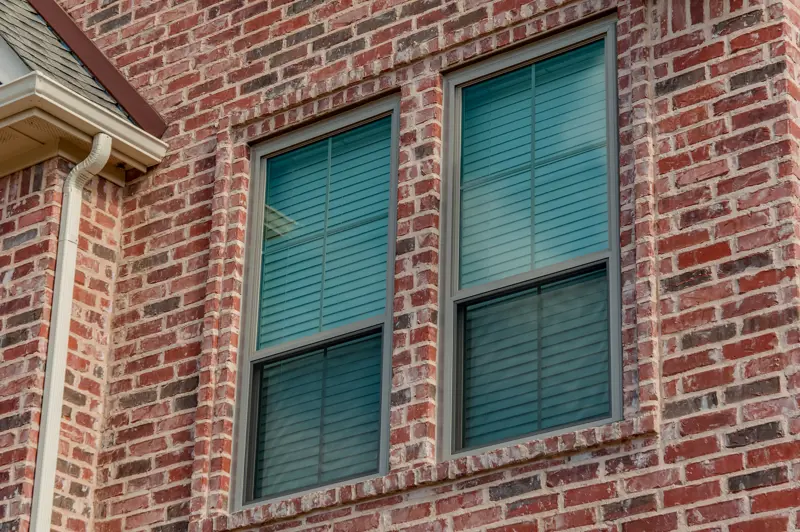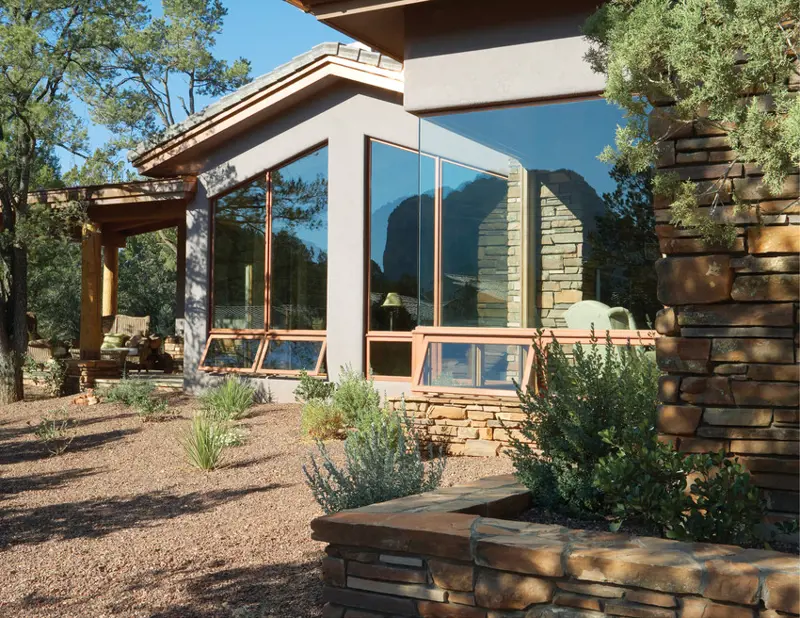
Direct Set vs Sash Set Windows
Choosing windows can be complicated business! There are a lot of complicated terms referring to different types of windows—and while some windows are very affordable, others can run up costs quickly depending on the options that you choose. The choice between direct set windows and sash set windows↗ relies on factors like cost, operability, and customizable options. Here, we explain the difference between these two types of windows to make it easier for you to choose between them!
What is a Sash Set Window?
To understand what sash set and direct set windows are, it’s important to understand the biggest difference between these two types of windows. Sash set windows are usually openable↗ windows while direct set windows cannot be opened. With a sash set window, the frame and the sash are two separate parts, with the sash being the operable part.
There are lots of different types of sash windows↗. The most common type of sash set window is the double-hung window, in which the bottom part slides upward. There are also horizontal sash windows, otherwise known as “slider windows,” which feature a sash that slides left to right.
Casement windows are yet another type. These operate with a crank handle, and the sash swings outward either horizontally or vertically depending on the window’s design. These are not to be confused with the fixed casement window, which is a type of direct set window that lacks the hardware to be opened.
There are a couple of advantages to sash set windows. Operability is one—you can open them whereas direct set windows can’t be opened, even if you’d like the fresh air. Another advantage is that double-hung and casement windows in standard sizes are often more cost effective than large direct set windows or sash windows in unusual sizes.
Disadvantages include size—sash set windows are typically smaller because larger, heavier windows are much more difficult to open. You can sometimes find single-hung and double-hung sash set windows in large sizes, but these require framing substantial enough to handle the weight of large amounts of glass, plus extensive balance systems to help them open and close easily—both of which can drive up the cost per window. These windows also require more maintenance to keep them operable and to ensure drafts don’t filter through around worn weather sealing. Picture windows are also available in sash set window frames so that the profile will match to other window styles in the home.
What is a Direct Set Window?
As mentioned above, a direct set window is a fixed window that cannot be opened. They typically feature a simpler frame because of this—and often they’ll have an ultra narrow frame in order to maximize the amount of glass used and thus, the view you’ll enjoy.
What are the advantages to direct set windows? They come with lower maintenance concerns since you won’t have to keep up with moving parts or sealing drafts, for one. Another advantage is that these windows can be built bigger—and they are available in more shapes, too. Large picture windows, arched windows, and even circular windows are all common among direct set window styles.
The biggest disadvantages are cost and operability. They can’t be opened, which is a drawback for people who like an outdoor breeze. As to cost, small direct set windows may cost less than a sash set window of the same size, but because these windows are often larger, you can expect to pay more. Installation costs may also be higher, too, if you’re installing specialty shapes like arches or circular windows. To get the best and most accurate (timely) price, speak to a few window companies to get price estimates.
Should My Window be a Sash Set or a Direct Set Window?
The answer to this question depends on a variety of factors. Ask yourself the following:
- Is operability important to you? If you want to take advantage of breezy days or supplement air conditioning by opening windows to cool off your home at night, sash set windows may be the better option.
- What is your budget? Sash set windows are typically smaller and cost less, though small direct set windows are also less expensive. The larger the window, the more it will cost.
- What size will the window be? For small windows, you could use either direct set or sash set windows depending on costs and personal preferences for operability. But if you’re installing large windows, you may need to go with a direct set window simply because truly large sash set windows, if available, can be extremely expensive.
- What shape will the window be? Most sash set windows are rectangular or square by necessity. If you want arched windows, you’ll likely have to go with direct set windows—or pair square sash windows below with separate arched windows above.
- How important is the view? Direct set windows are often designed as picture windows to maximize you’re view. They’re usually larger than sash set windows, and they often feature narrow frames so that your line of sight is as unobstructed as possible. Sash set windows will still let you enjoy the view, but there will be more framework in the way.
- Do you value symmetry? Whether you get direct set or sash set make sure the window profiles match on all the windows in a room and from the exterior views of the house.
Choosing between sash set and direct set windows means that you’ll first need to decide whether or not you want operable windows. Also consider factors like the cost, size and shape of the windows—and whether or not extra framework will get in the way of your view.
Oops!
We don't currently serve your area but do want to help you plan your project. Try our Build & Price tool to get an idea of window & door costs within DFW. Your area may be higher or lower but at least you'll have some idea of the price.
Thanks for stopping by.







